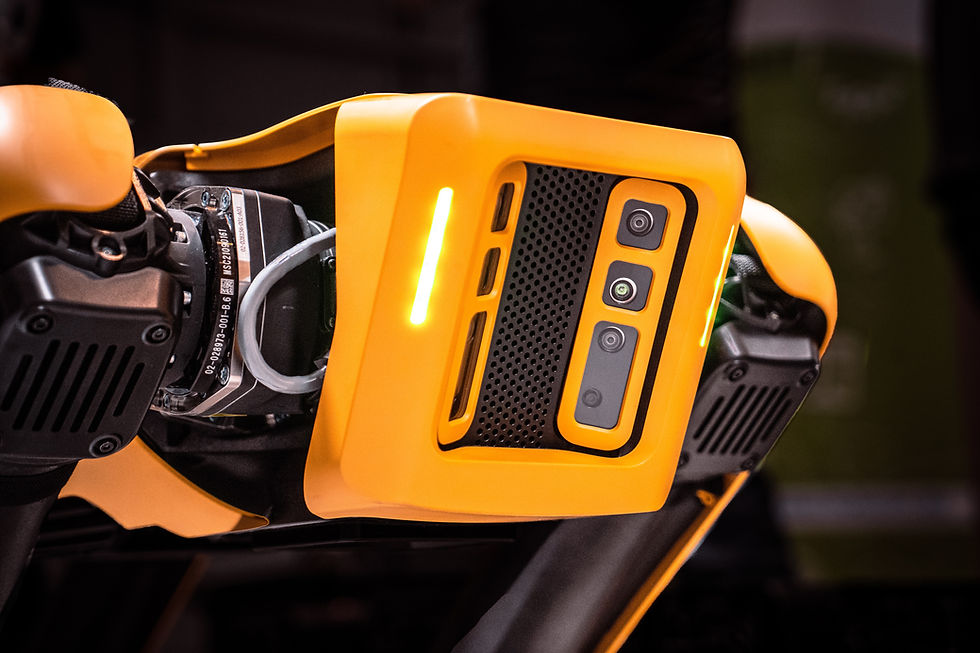IoT and SCADA: Paving the Way for Digital Twins in Asset Monitoring
- Samuel Ighalo
- Dec 18, 2024
- 4 min read

The digital transformation of industrial operations has unlocked unparalleled opportunities for efficiency, scalability, and visibility. Among these innovations, the integration of IoT (Internet of Things) and SCADA (Supervisory Control and Data Acquisition) systems has emerged as a key enabler for creating digital twins — virtual replicas of physical assets that allow real-time monitoring and management. This blog explores how IoT and SCADA technologies work together to build digital twins, revolutionizing asset monitoring and management in industries like manufacturing, energy, and utilities.
What Are Digital Twins?
A digital twin is a virtual model that mirrors a physical asset, process, or system in real time. This virtual counterpart is continuously updated with data from its physical counterpart, enabling operators to:
Monitor asset performance remotely.
Simulate operational scenarios.
Predict maintenance needs.
Optimize processes for efficiency.
By leveraging IoT and SCADA, industries can connect physical assets to their digital twins, making it possible to monitor entire systems from anywhere in the world.
IoT: The Backbone of Connectivity
The Internet of Things refers to a network of interconnected devices that collect and exchange data using sensors, software, and connectivity protocols. In the context of digital twins, IoT provides the real-time data necessary to maintain the accuracy and relevance of the virtual model.
Key IoT Components for Digital Twins:
Sensors: Measure parameters like temperature, pressure, vibration, and flow.
Edge Devices: Process raw sensor data locally to reduce latency.
Connectivity Protocols: Use technologies like MQTT, Zigbee, or 5G to transmit data.
Cloud Platforms: Store, analyze, and manage the vast amounts of data generated by IoT devices.
IoT ensures the physical asset is continuously monitored, providing the raw data for the digital twin to function.
SCADA: The Command Center
SCADA systems have long been the foundation of industrial control and monitoring. They collect data from sensors and field devices, process it, and present actionable insights to operators. When integrated with IoT, SCADA systems become more powerful, enabling seamless communication between physical assets and their digital twins.
SCADA’s Role in Digital Twins:
Real-Time Data Collection: SCADA gathers data from distributed control systems (DCS) and programmable logic controllers (PLCs).
Visualization: Provides dashboards that allow operators to interact with the digital twin and track system performance.
Control and Automation: Enables remote control and adjustments to the physical asset based on insights from the digital twin.
Historical Data Analysis: Leverages past performance data to improve predictive analytics and operational insights.
Creating a Digital Twin with IoT and SCADA
The process of building a digital twin involves combining IoT’s connectivity with SCADA’s control capabilities. Here’s how it works:
1. Data Collection
IoT sensors continuously monitor the physical asset, capturing data such as temperature, pressure, and energy consumption. SCADA systems aggregate this data and send it to a central repository, such as a cloud platform.
2. Data Integration and Modeling
The collected data is processed and used to create a virtual model of the asset. Advanced analytics and machine learning algorithms can identify patterns and establish correlations between variables.
3. Real-Time Updates
IoT devices stream data to the digital twin, ensuring it mirrors the physical asset in real time. This synchronization allows operators to view and manage asset performance remotely.
4. Insights and Predictive Analytics
The digital twin’s real-time data feeds into predictive models that forecast potential failures, optimize maintenance schedules, and recommend operational adjustments.
5. Control and Optimization
Using SCADA, operators can remotely adjust asset parameters or implement control strategies based on insights from the digital twin, improving efficiency and reducing downtime.
Applications of Digital Twins
1. Energy and Utilities
Digital twins of power grids or pipelines enable operators to:
Monitor energy flow in real time.
Detect and isolate faults.
Optimize energy distribution.
2. Manufacturing
Factories use digital twins to:
Track machine performance.
Predict maintenance needs.
Simulate production line changes for efficiency improvements.
3. Oil and Gas
In oilfields, digital twins:
Provide real-time insights into equipment health.
Reduce downtime through predictive maintenance.
Optimize drilling and extraction processes.
4. Smart Cities
Digital twins of infrastructure like traffic systems and buildings:
Enable remote monitoring.
Enhance urban planning.
Improve resource allocation.
Benefits of IoT and SCADA for Digital Twins
Remote Monitoring: Access real-time data and insights from anywhere, reducing the need for on-site presence.
Improved Efficiency: Optimize operations by analyzing data and implementing recommendations.
Cost Savings: Reduce downtime, energy usage, and maintenance costs.
Enhanced Safety: Monitor hazardous environments without exposing personnel to risks.
Scalability: Add new assets or features seamlessly to the digital twin ecosystem.
Challenges in Implementation
While IoT and SCADA offer significant advantages, implementing digital twins is not without challenges:
Data Security: Protecting sensitive information from cyber threats.
Interoperability: Ensuring seamless communication between diverse IoT devices and SCADA systems.
Cost: High initial investments in sensors, connectivity, and platforms.
Skill Gaps: Training personnel to manage and interpret digital twin insights.
Conclusion
The integration of IoT and SCADA for creating digital twins is revolutionizing asset monitoring and management. By providing real-time visibility and actionable insights, digital twins empower organizations to optimize operations, reduce costs, and improve safety. As technology continues to advance, digital twins will play an increasingly central role in industrial digital transformation, enabling operators to monitor and manage assets from anywhere in the world.
Are you ready to embrace the future of asset management? With IoT and SCADA, the possibilities are limitless.



Comments